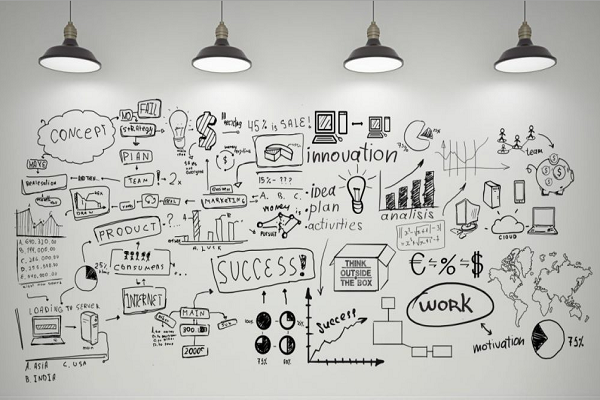Following systems, rules, and protocols is generally not in the best interests of creative people.
Over the last two decades, the design and architecture industry has evolved by leaps and bounds. Various innovative practices have emerged in recent years, bringing contemporary Indian architecture to the global forefront. Since the mid-1990s, India has produced an increasing number of qualified architects. From 12 architecture schools in 1972 to over 470 approved schools today, more than 20,000 professionals are added every year. This scale of growth in the architecture industry has compelled firms to formalise their working systems and processes in order to match global standards. Simultaneously, the need to streamline enablement functions such as Human Resources, Finance, Marketing Communications, and Technology to support the smooth functioning of this industry has become imperative.
However, very few architecture firms in India have the vision to incorporate systems and bring in best practices for their enablement functions and working processes. This is because most firms in this sector have yet to recognise the value of utilising such a systematic approach to support and sustain their long-term viability. In most design firms, a 1–2-member “all in one” team handles basic supporting functions such as HR, administration, finance, and technology.
I started in this industry as an HR professional in 2006, after working in consulting firms for about two years. I was fortunate to be hired to lead the Human Resources function at a leading name in the architecture industry. We embarked on a journey to incorporate global practices and standards into people processes and HR policies at a time when no other design firm had made breakthroughs in this area.
It was difficult in the early years to persuade designers to use systems and policies in their day-to-day work and use a formal performance assessment approach. Following systems, rules, and protocols is generally not in the best interests of creative people. However, there was significant acceptance of structure and processes with our determined efforts.
Based on my diverse experience of culture building and implementing people processes for a niche industry driven by creative and artistic people, I’d like to share a few learnings that have worked well for the architecture and interior design industry:
• Hiring the Right Talent
Hiring in architecture and interior design is very specific to the skills a firm is looking for, whether it is design, project execution, or project management. Campus placements from top Architecture and ID schools in India and abroad, industry networking, internal team referrals and job publicity in relevant professional and academic groups are key to attract the right talent. Hiring people with proficient functional and behavioural job skills who fit into the organisation’s culture is critical to developing a good talent mix. Hiring from job portals hasn’t been particularly beneficial in this industry.
• Onboarding – The First Impression
As with any organisation, an employee’s onboarding is crucial and plays a significant role in building their trust in the firm. Following on from my previous point about creative people’s dislike of being bound by too many processes and policies, onboarding is a good time to orient them into the firm’s culture and foster faith in the working processes so that they begin to see a value addition in working systematically.
• Holistic Performance Assessment
Whether it’s concept design, project execution, project management, or technical/graphical skills, it’s essential to develop a measurable skill-based feedback structure that helps evaluate a designer’s creativity, identify key development areas, and assist in paving their future growth. The feedback mechanism must be frequent, unbiased, transparent, structured, measurable and communicated effectively. Feedback structured around project-based case studies or instances has been shown to be much more effective in terms of understanding.
• Training & Development
Along with a comprehensive and successful performance assessment, firms must prioritise upskilling and training design professionals. This is integral to driving innovation and enhancing design quality in diverse projects. To successfully complete a project from concept to completion, an architect or interior designer must possess a wide range of technical skills, including building codes, standards, design elements, details, working drawing, and overall industry awareness. If development areas are identified in a structured manner, regular training sessions with assessments mentored by industry experts, architecture school professors, or internal team subject matter experts can be planned and executed.
• Building a Cohesive Culture
Creating a performance-focused culture may not be the healthiest or the most sustainable way of fueling results for a firm. It’s more meaningful to foster a culture of learning and growth. Because architecture and interior design is a knowledge-based industry, it’s crucial to create an environment that promotes learning, knowledge sharing, motivation, security, and growth. I’ve noticed a trend of promising architects gaining a few years of work experience in good design firms before establishing their independent practice, similar to how doctors and lawyers do. Hence, providing them with an enriching journey benefits the designers and the firms to nurture competent talent for the future.
Another trend is a significant increase in the number of women working in the architecture industry. This is something I am incredibly proud to share as a woman. I have attempted to maintain a balanced gender ratio at the workplace with no bias whatsoever. Some of the key initiatives I have implemented in this industry to calibrate a progressive work culture include extended maternity leaves followed by flexible career opportunities for the creative new mothers, housing benefit policy to assist our employees in owning their own roof whilst they help design homes for their clients, provide skill-based career options for professionals and an opportunity to learn and teach architecture and ID students while continuing their professional careers, among others.

Is your organisation post-COVID-ready?
Trending
-
SBI General Insurance Launches Digital Health Campaign
-
CredR Rolls Out 'Life Happens' Leave For Its Employees
-
Meesho Announces 30-Week Gender-Neutral Parental Leave Policy
-
Microsoft Unveils Tech Resilience Curriculum To Foster An Inclusive Future
-
60% Indian Professionals Looking For Job Change Due To COVID: Survey
-
SpringPeople And Siemens Collaborate For Digital Transformation Push
-
86% Professionals Believe Hybrid Work Is Essential For Work Life Balance: Report
-
Almost 1 In Every 3 People's Personal Life Affected Due To Work Stress
-
Meesho Rolls Out Reset And Recharge Policy For Employees
-
80% Of Talent Leaders & Academics Say Pandemic Changed Skill Needs For Youth: Report
-
Hero Electric Rolls Out 'Hero Care' Program For Employees
-
Human Capital In Collaboration With ASSOCHAM Hosts Virtual Conference
-
IKEA India, Tata STRIVE Collaborate To Create Employability And Entrepreneurship Opportunities
-
SAP India, Microsoft Launch Tech Skilling Program for Young Women
-
DXC Technology, NASSCOM Collaborate For Employability Skills Program
-
Lenskart To Hire Over 2000 Employees Across India By 2022
-
Mindtree Launches Learn-and-Earn Program
-
Tata AIA Extends 'Raksha Ka Teeka' To Its Employees
-
Swadesh Behera Is The New CPO Of Titan
-
NetConnect Global Plans To Recruit 5000 Tech Professionals In India
-
Hubhopper Plans To Hire 60% Of Indian Podcasters By 2022
-
Corporate India Needs More Women In Leadership Roles: Report
-
Aon to Invest $30 Million and Create 10,000 Apprenticeships by 2030
-
Tech Mahindra Launches ‘Gift a Career’ Initiative for Upskilling of Youth
-
40% Women Prefer Flexible Working Options in Post-COVID World: Survey
-
3 out of 4 companies believe they can effectively hire employees virtually: Report
-
Vodafone , CGI and NASSCOM Foundation launch digital skills platform
-
Odisha: Bank, postal employees to deliver cash for elderly, differently-abled persons
-
Skill India launches AI-based digital platform for "Skilled Workforce"
-
Hiring activity declines 6.73% in first quarter: Survey
-
70% startups impacted by COVID-19 pandemic
-
Bajaj Allianz Life ropes in Santanu Banerjee as CHRO
-
Over 70 Percent MSMEs look at cutting jobs to sustain businesses
-
93 Per Cent employees stressed about returning to office post-lockdown
-
Johnson & Johnson India announces family benefits for same gender partners
-
Indian firms turning friendly towards working mothers
-
Welspun India names Rajendra Mehta as new CHRO
-
Wipro partners with NASSCOM to launch Future Skills platform



Human Capital is niche media organisation for HR and Corporate. Our aim is to create an outstanding user experience for all our clients, readers, employers and employees through inspiring, industry-leading content pieces in the form of case studies, analysis, expert reports, authored articles and blogs. We cover topics such as talent acquisition, learning and development, diversity and inclusion, leadership, compensation, recruitment and many more.
Subscribe Now












































Comment